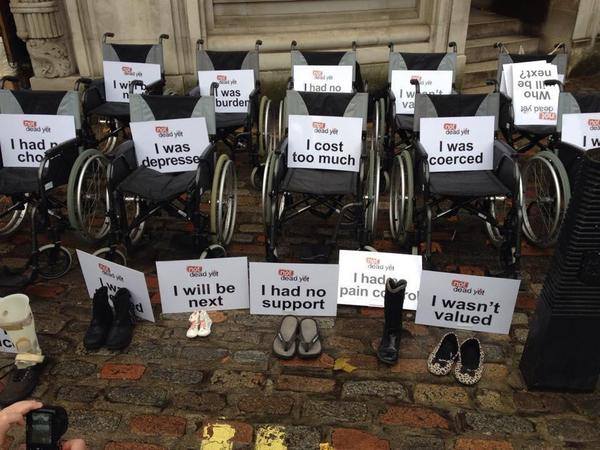Written 6th September, 2015. For more information on why assisted suicide is not a good thing, please visit Care Not Killing, an organisation campaigning for better palliative care and resistance to assisted suicide laws.
Dear Editor,
In regard to your September 5th editorial on Assisted Dying, I found this sentence particularly telling:”Many see a man with locked-in syndrome and see a man who should be helped to die.”
Many do indeed assume that some classes of people should be helped to die instead of to live. The reality that studies have consistently shown that people with locked-in syndrome do not want to die means nothing to someone who sees someone sick, dying, paralysed or disabled and just sees someone “who should be helped to die”.
However you look at it, visible disability or suffering leads people to wish others dead. I don’t want a society where their feelings prevail over the wishes of the vulnerable and the dependent. Helping someone to end their own lives on compassionate grounds was decriminalised in 2010, so we do not need a institutionalised system whereby people are subtly put under pressure to not be a burden to their families and swallow the pills. or worse, not even being given the choice at all.
Faithfully,
Sarah McCulloch

Well said.
I recall a statistic from my student days, which was some time ago (mid/late-90s) which stated that, since euthenasia had been fully legalised in Holland, 1 in 12 people at the time died in an assisted manner. I cannot remember the source of the statistic, but it stuck with me.
I can’t imagine that 1 in 12 people were in a situation where their lives were so unbearable (through pain or whatever) that they actively sought an end to their lives. I can only concur that there must be, in some cases, an element of direct or indirect coersion, where people felt that they were a burden to their families or whatever, and the purpose of the law is to protect the most vulnerable.
We do have a form of assisted dying in the UK – it’s called the Liverpool Care Pathway. It’s a form of palliative care which can be used at a patient’s request, in conjunction with their family, where they are terminally ill and are likely to die in any case within weeks. Painkillers are used beyond safe dosages, not with the intent of artificially ending life, but purely with the intent of actually removing the patient’s pain, without consideration for organ damage (which is a moot point at that point). This may or may not have the secondary effect of hastening death, but the primary purpose of the care pathway is to ensure pain-free, comfortable and dignified end of life care. My grandmother chose the pathway at 94, when she had been given a few weeks to live. The doctors and nurses involved were brilliant at following the pathway, keeping everyone informed, and even loaned me a copy of the pathway manual for doctors (there is a manual for doctors and one for patients and relatives, so everyone is fully informed as to the plan at all times – I read both several times).
As a result, my grandmother, having lived a long and full life, having lived independently to the age of 80, and having lived with my parents for over a decade thereafter, and then in specialist care for a couple of years after she needed more support than could be provided in my parents’ home, died on her own terms, surrounded by her family, and without pain. I worry at what age she would have died if we followed the Dutch model.